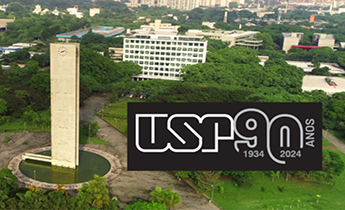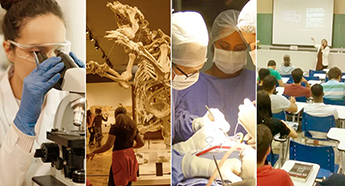
A Biblioteca do IFSC apresenta os artigos científicos produzidos pelos seus docentes e pesquisadores que foram identificados como interessantes no bimestre de jan/fev de 2022 pela Essential Science Indicators, um dos produtos de citação da agência Clarivate Analytics/Thomson Reuters. Lembramos que o acesso ao texto completo é liberado para comunidade USP ou quem tem acesso ao Portal CAPES.
Para mais informações: sbiprod@ifsc.usp.br
ÁREA: Agricultural Sciences
ÁREA: Chemistry
Emergence of complexity inhierarchically organized chiral particles
Folding of xylan onto cellulose fibrils in plant cell walls revealed by solid-state NMR
Molecular docking and structure-based drug design strategies
Plasmonic biosensing: focus review
Yolk-shelled ZnCo2O4 microspheres: Surface properties and gas sensing application
ÁREA: Clinical Medicine
Features of third generation photosensitizers used in anticancer photodynamic therapy: Review
ÁREA: Computer Science
Clustering algorithms: A comparative approach
ÁREA: Materials Science
ÁREA: Molecular Biology & Genetics
Functional and evolutionary insights from the genomes of three parasitoid Nasonia species
ÁREA: Pharmacology & Toxicology
ADMET modeling approaches in drug discovery
ÁREA: Physics
Boosting the sensitivity of Nd3+-based luminescent nanothermometers
Bose-Einstein condensation: twenty years after
Generalized Geometric Quantum Speed Limits
The Kuramoto model in complex networks
The Pierre Auger Cosmic Ray Observatory
Towards understanding the origin of cosmic-ray positrons
ÁREA: Space Science
Detection of variable VHE γ-ray emission from the extra-galactic γ-ray binary LMC P3
Multi-messenger observations of a binary neutron star merger
Observation of a large-scale anisotropy in the arrival directions of cosmic rays above 8 x 1018 eV
Por Assessoria de Comunicação – IFSC/USP



